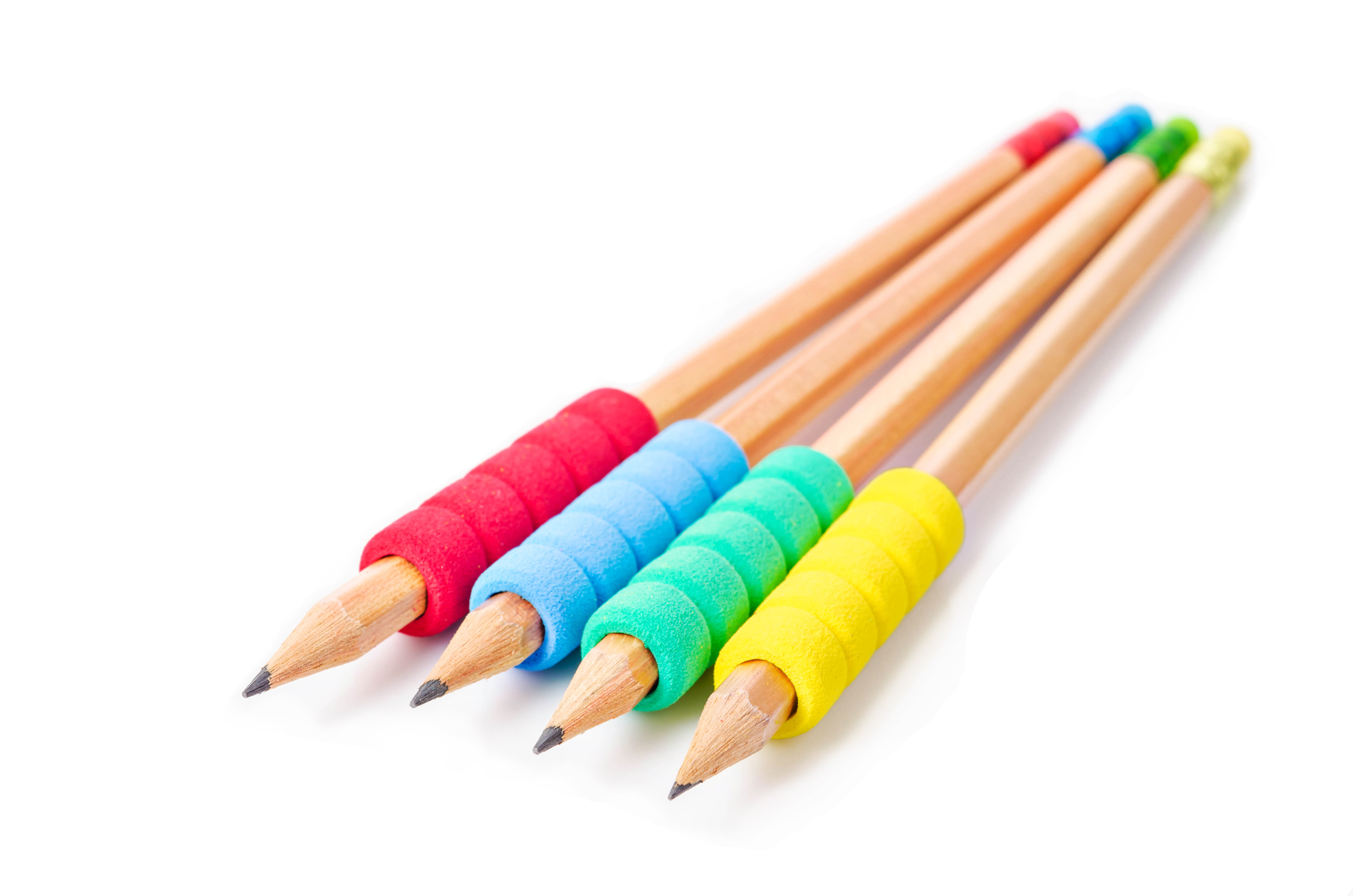Get a grip - fine motor skills
EdPlace looks at a selection of grips available and how they can help develop fine motor skills.
Why is the pencil "hold" important?
A good pencil hold will allow your child to keep their wrist steady and to make small finger movements. This helps them to move a pen or pencil in different directions to make short straight and curved lines – necessary when forming letters and writing.
Most young children start out by using the ‘palmar grip’ which is where the pencil is held in the palm and the pencil point pokes out between their thumb and forefinger. Their wrist is straight and their forearm faces down towards the page.
By the ages of 3 and 4, this position usually changes so that the front end of the pencil is held by the fingers and the back end is supported between the thumb and forefinger with a straight wrist. The pencil is kept stable between the thumb and the side of the index and middle fingers. The ring and middle fingers lightly touch the palm and the wrist is held straight. This is the most common position and is known as the tripod grip (below).
Children with Hypermobility difficulties, Dyspraxia, Autism and Dysgraphia may find writing uncomfortable, tiring or difficult, especially if they have a different type of hold on their pencil. Sometimes, their hold can be improved or corrected by using pencil grips or supports that are available to buy. The best supports provide stability when holding the pencil and still allow those small finger movements to make marks on the paper.
See the EdPlace SEND hub for more specific resources and information about Dyspraxia, Autism and Dysgraphia.

Does my child need a pencil grip/support?
It’s not necessarily whether their pencil hold is accurate, or even showing a tripod position but whether their hold allows them to make small finger movements so that they can control the nib or point of the pen or pencil. Watch your child write and look for any wrist movements they may make rather than finger bending or straightening. Wrist movements to move the pencil point on the paper because the fingers are too bent or the pencil is being gripped too strongly, may mean that a pencil grip/support would help.
If your child holds the pencil with very straight fingers and thumb, wrist movements will also be used to make the pencil point create short strokes and this could also mean a support grip would be useful. It’s worth remembering, however, that if your child finds the tripod position difficult but they’re managing to write perfectly well without problems, it may be better to leave well alone! Some say it’s best to leave the hold uncorrected as changing it would cause more problems and create more fatigue for the child to learn an entirely new hold.
Visit the EdPlace website for accessible English activities on Handwriting practice:
Free worksheets SEND Hub Motor skills blogs
Getting a grip!
Teachers and therapists sometimes recommend the use of a support pencil grip to improve hold, handwriting style, fatigue or comfort. They often have their own favourite recommendation for a specific pencil grip to use. The key factor to remember however, is that the support grip should always allow for effective finger movement. Find a grip that’s comfortable and choose one that allows your child to make small bending and straightening finger movements whilst writing.
EdPlace takes a look at some of the many different types of grip that are available. If you’re unsure about whether your child needs to use a support grip or which one to choose, talk to their teacher or school SENCO for advice. Try different grips to see which one your child is most comfortable with. The pens and pencil grips that we mention are only a small selection of what’s
available out there. Take a look at the websites below for more information and suggestions of where you can purchase support grips.
https://www.amazon.co.uk/slp/pencil-grips-for-kids/cqg72v443r8u8dg

EdPlace can help with information about Fine Motor Skills to support hand and finger movements. Take a look at the SEND hub for help. EdPlace has many specialist accessibility features to ensure that every child is able to access the interactive curriculum content.










